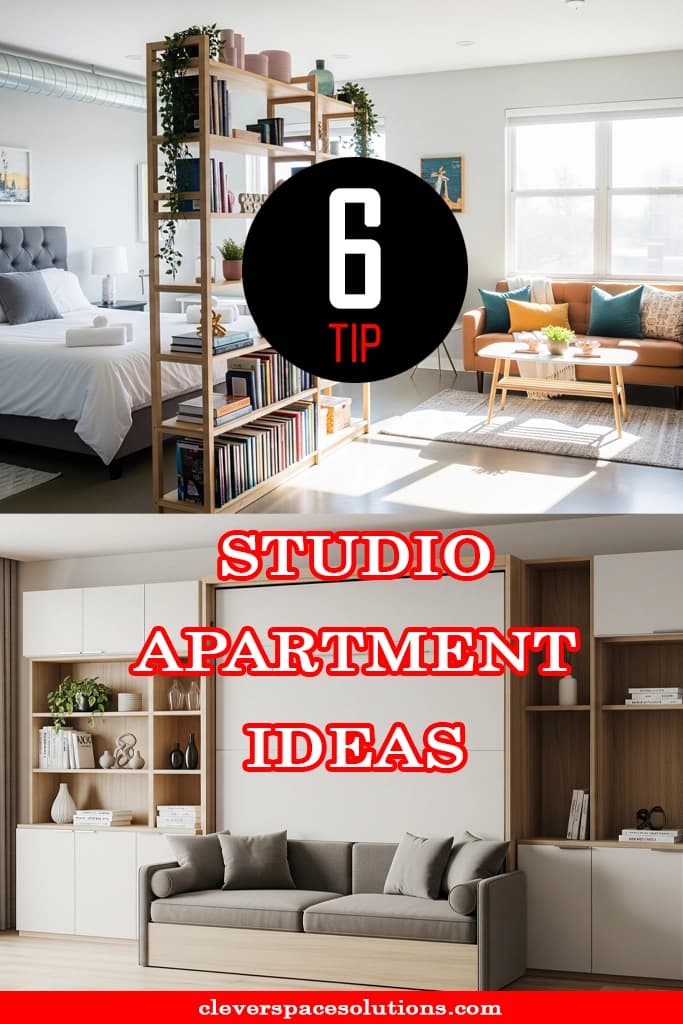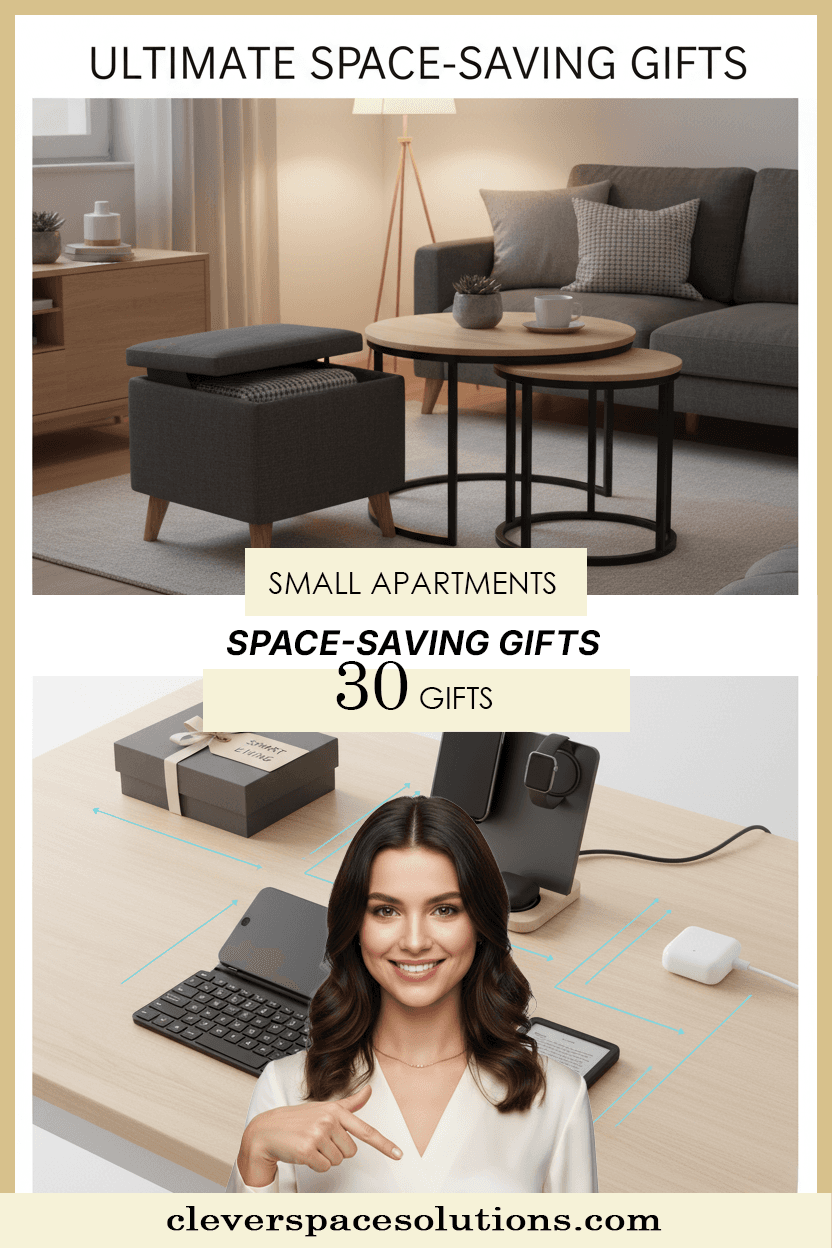How Do You Decorate a Studio Apartment?
Wondering how to furnish your studio apartment without it feeling cramped? This ultimate guide answers your questions with smart ideas for zoning, furniture, and decor to maximize your small space.

How Do You Decorate a Studio Apartment? The Ultimate Guide to Style & Comfort
Part 1: The Potential of the Studio Apartment: Big Living in a Small Space
The dynamics of modern urban life are steering us towards more compact, practical, and efficient living spaces. In this context, studio apartments stand out as more than just a type of housing; they are a conscious lifestyle choice. Elements that might initially seem like challenges—such as limited area, lack of storage, and the need for privacy—actually open the door to creative and intelligent design solutions. This guide offers a comprehensive roadmap on how to transform every square centimeter of your studio apartment into a more functional, spacious, and stylish place.
1.1. The Studio Apartment Paradox - From Limitations to Opportunities
A studio apartment, by definition, is a compact living space that combines living, sleeping, and dining areas into a single room. It offers a practical solution with its accessibility, lower maintenance costs, and affordability, especially for students, young professionals, and those who embrace a minimalist philosophy.
However, the fundamental challenges of this compact living can be overcome with the right approach, turning the space into a personalized and extremely comfortable sanctuary.
-
Limited space encourages smarter furniture choices.
-
Lack of storage inspires the creative use of vertical spaces.
-
The need for privacy promotes elegant solutions that aesthetically divide the space.
This process is not just a decoration project but also a journey of discovery that strengthens the bond with one's living space.
1.2. The Power of Perception: Three Golden Rules for Creating Spaciousness
The secret to making a space feel larger and more open doesn't lie in tearing down walls but in managing perception. The goal of decoration here is not only to create an aesthetic look but also to increase psychological comfort.
-
Light: Light is the most valuable asset of a small space. To make the most of natural light, avoid blocking windows with furniture and opt for light, sheer curtains instead of heavy, dark drapes. For artificial lighting, adopt a layered approach. In addition to a ceiling lamp that illuminates the entire room, add depth and warmth to every corner with local and ambient lighting, such as a floor lamp for a reading nook or spotlights to highlight artwork.
-
Color: The psychology of colors has a direct impact on the perception of space. Light and neutral colors like white, beige, light gray, and pastels reflect light, pushing the physical boundaries of the walls back and making the space look larger and brighter.
-
Flow: Creating a sense of visual fluidity is key to breaking the feeling of confinement. Contrary to popular belief, pushing furniture completely against the walls can make a space feel narrower. Instead, leaving a few inches of space between furniture and the wall and creating "negative space" for easy movement adds visual airiness and dynamism.
Decorating Tips to Make Your Home Feel More Spacious and Bright
Part 2: Redefining the Space: Smart Layouts and Strategic Zoning

The greatest challenge of a studio apartment is housing all life functions in a single room. However, this can be turned into an advantage with smart planning and strategic "zoning" techniques. The aim is to create "permeable" boundaries that define functional areas while preserving the integrity and spaciousness of the space.
2.1. Creating Functional Zones: Map Out Your Life
Before starting the decoration process, the most crucial step is detailed planning. Analyze your lifestyle, identify your needs, and draw a layout on paper. Define the main zones: sleeping, living, working, and dining. The location of the bed, usually the largest piece of furniture, is a key factor that determines the placement of all other elements.
2.2. Invisible Walls: Defining Space with Furniture and Rugs
It's possible to define different zones without using a physical divider. Grouping furniture according to its function is one of the most effective methods. For instance, a sofa, a coffee table, and an armchair visually code that area as the "living room." Similarly, rugs are a powerful tool. Using a separate rug for the living area and another for the sleeping area draws clear visual boundaries on the floor.
2.3. Physical Boundaries: Room Dividers for Privacy and Order
When a more distinct separation and privacy are desired, physical room dividers come into play.
-
Bookshelves: Especially open-backed or asymmetrical bookshelves, they offer storage while allowing light and view to pass through, preserving the room's openness. This is one of the most popular and functional solutions.

-
Curtains: A ceiling-mounted track system with curtains offers a flexible, economical, and effective privacy solution.
-
Folding Screens (Paravans): Being portable, they can be positioned according to immediate needs and also act as decorative, sculptural objects.
-
Glass Panels: Metal-framed glass partitions offer a modern, sophisticated aesthetic, keeping the space bright and airy. However, they are more costly and do not provide privacy.
Part 3: The Heroes of the Studio: Multi-Functional and Smart Furniture

Choosing furniture for a studio apartment is more like designing a "daily routine scenario" than creating a shopping list. The pieces should be dynamic systems that transform according to different needs and times of the day.
3.1. Furniture That Does More with Less: The Art of Transformation
A piece of furniture serving multiple purposes is a life-saving principle in a studio.
-
Sleeping Solutions:
-
Murphy Beds (Wall Beds): The most effective solution for completely eliminating the bed area during the day, turning the space into a living room or workspace. Modern designs are now integrated with additional functions like sofas or desks.
 View on Amazon
View on Amazon- Sofa Beds: This classic solution offers both a comfortable seating area and a practical bed.
-
-
Dining and Working Solutions:
-
Folding and Extendable Tables: Tables that can be folded against the wall, stand as a narrow console, or expand as needed are key to using space efficiently.
-
Convertible Coffee Tables: Smart coffee tables that can be adjusted in height and expanded to become a dining or work surface provide flexibility.
-
Bar Tables and Stools: Bar-style dining areas, created as an extension of a kitchen counter or with a narrow wall-mounted shelf, take up much less space than traditional dining tables.
-
3.2. Hidden Weapons Against Clutter: Smart Storage
The secret to maintaining order is to see every square centimeter as potential storage.
-
Horizontal Storage: Use solutions close to the floor to create out-of-sight storage. Storage beds, wheeled under-bed boxes, and ottomans with storage interiors are perfect for hiding clutter.
-
Vertical Storage: When floor space is limited, the solution is to look up. Equipping walls with floor-to-ceiling open shelving or closed cabinets offers immense storage capacity and can make the ceiling appear higher.
3.3. Selection Criteria: How to Recognize the Right Furniture?
-
Scale and Proportion: For studio apartments, the "less is more" rule applies. Avoid bulky, massive furniture. Instead, prefer designs with thin metal or wooden legs, a high clearance from the floor, a low profile, and minimalist lines.
-
Material: The choice of material directly affects the visual weight of the furniture. Materials like glass coffee tables or transparent acrylic chairs take up less visual space and add a modern sense of depth.
Part 4: 2025 Trend Report: Bring Your Studio into the Future

2025 decoration trends offer a perfect opportunity to break the "boxy" perception of studio apartments. These trends encourage a shift from an obsession with "enlarging" small spaces to a philosophy of "enriching" them.
4.1. The Palette of the Year: Warmth Inspired by Nature
-
Earthy Tones: Olive green, terracotta, sand beige, and mustard yellow add instant warmth, peace, and a grounded feeling.
-
Saturated Jewel Tones: Rich, deep colors like burgundy, forest green, and navy blue, used on an accent wall or in accessories, lend a sophisticated and luxurious atmosphere.
-
"Color Drenching" Technique: Painting the walls, ceiling, doors, and trim in a single color creates a surprisingly spacious and cocoon-like feel.
4.2. Prominent Styles and Movements
-
Biophilic Design: This philosophy of bringing nature indoors involves using natural materials (raw wood, stone), organic forms, and plenty of natural light.
-
Warm Minimalism & Scandinavian Revival: The sharp, cold lines of minimalism are giving way to a more inviting and comfortable simplicity, incorporating textured surfaces (linen, wool), layered textiles, and soft, rounded furniture.
-
Retro Nouveau: This eclectic style blends the geometric forms of Art Deco with the organic curves of Art Nouveau, adding character and personality with arched forms, stylized shapes, and gilded metal details.
Part 5: Style Guide: Studio Apartments That Reflect Your Personality

Let's examine how two popular decoration styles can be applied to studio apartments step by step.
5.1. Calm and Orderly: Step-by-Step Minimalist Studio Apartment
-
Philosophy: "Less is more." The goal is to create a calm, orderly, and peaceful living space by eliminating all unnecessary items and clutter.
-
Color Palette: Generally consists of monochromatic or analogous color schemes of neutral colors like white, beige, and light gray.
-
Furniture: Clean-lined, low-profile, functional pieces are preferred.
-
Decoration: Decorative objects are kept to a minimum. A single large abstract painting, a couple of carefully chosen ceramic objects, or a sculptural green plant is enough to add personality.
5.2. Free and Artistic: Layered Bohemian Studio Apartment
-
Philosophy: A style where freedom, eclecticism, and personal expression are at the forefront. It is formed by bringing together items with a story, collected from different cultures, periods, and styles.
-
Color Palette: There are no specific color rules. Earth tones form the base, while jewel tones and vibrant, energetic colors (orange, fuchsia, turquoise) are used boldly.
-
Furniture: Vintage pieces with a sense of history are often preferred. Natural materials like rattan, bamboo, and wood are prominent. Comfortable and intimate seating areas are created with low settees and plenty of floor cushions.
-
Decoration: The soul of the bohemian style is hidden in the details. Plenty of potted plants, handmade macrame wall hangings, layered rugs of different patterns, knitted blankets, and colorful throw pillows enrich the space.
Part 6: Action Plan: A Checklist to Transform Your Studio Apartment
This final section will guide you through the process of transforming your studio apartment with a step-by-step roadmap.
-
Step 1: Plan and Purge (Strategy): Draw a floor plan, analyze your needs, and declutter. Remember, the best storage solution is to own fewer things.
-
Step 2: Lay the Foundation (Layout): Start by placing the bed, as it's the largest and most fixed piece of furniture. Then, establish the living area.
-
Step 3: Add Function (Furniture and Storage): Incorporate multi-purpose pieces and integrate storage solutions like wall shelves and under-bed boxes.
-
Step 4: Personalize (Layers and Style): Layer your lighting, add textiles (curtains, rugs, pillows), and finish with personal touches like mirrors, art, and plants. This final layer is what makes the home "yours."
Affiliate Disclosure
Some links on this page are affiliate links. If you purchase a product through these links, I may earn a small commission at no additional cost to you. Thank you for your support!
Tags
Other Articles

3 Flawless Layouts and 5 Real-Life Studio Solutions
Wondering how to arrange furniture in your small apartment? Get 3 fail-proof layouts for narrow living rooms and 5 genius plans for studio apartments.

Studio Apartment Hack: 10 "Cloffice" & WFH Nook Ideas That Save Space
Need a home office in your studio apartment? Discover 10 clever ways to create a WFH nook, including amazing "cloffice" (closet office) hacks.

Best Space-Saving Gifts for Small Apartments?
Wondering what gifts to buy for someone in a small space? Our 2025 guide answers with 30 genius space-saving tech, storage, and furniture ideas.